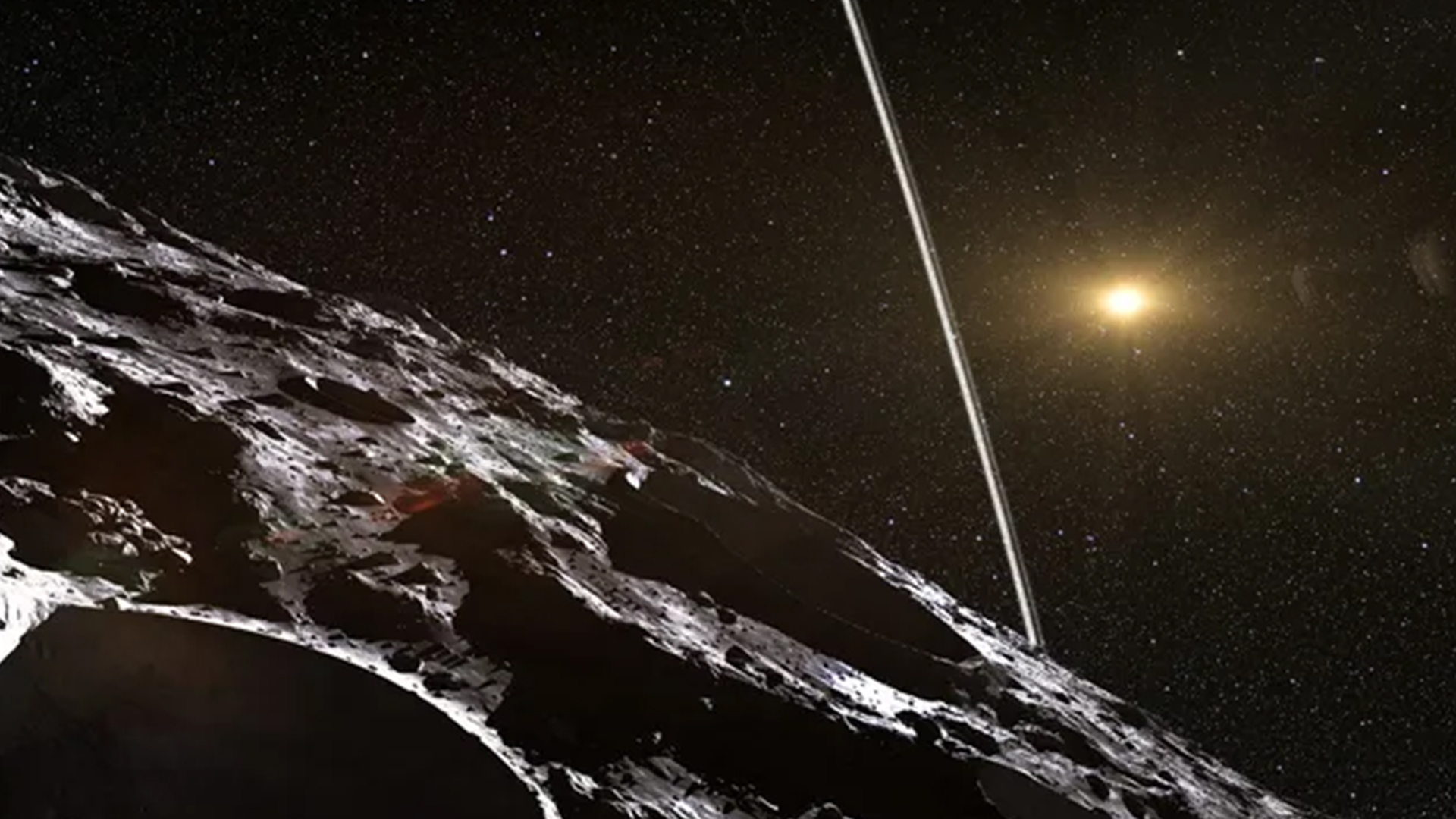Strange object trapped between Saturn and Uranus is transforming before our eyes
A distant comet trapped in orbit between Saturn and Uranus is accompanied by a transforming disk of icy dust, new observations reveal.

A bizarre object that sometimes gets as close to the sun as Saturn, and other times retreats as far out as Uranus, has been discovered to have a transforming disk of dust around it that changes shape and can even mimic rings.
Minor planet 2060 Chiron is what's known as a Centaur, which are captured cometary objects that travel around the sun on looping orbits between Jupiter and Neptune. Chiron is just 218 kilometers (135 miles) across and occasionally has outbursts like a comet. To date, however, no spacecraft has ever visited a Centaur.
In 2011, Chiron passed in front of a faint star from our point of view here on Earth. Such events are referred to as "stellar occultations," and based on how an object such as Chiron blocks a star's light, the occulting object's shape and size can be determined through deduction. During the 2011 occultation, it was noticed that the star's light dimmed slightly — twice before Chiron itself occulted the star, and two further times after Chiron had moved past the star. This observation was interpreted as Chiron having a double-ring system of dust.
Related: City-size 'devil comet' headed for Earth turns green after massive volcanic eruption
Then, Chiron occulted another star on Nov. 28, 2018, in an event taken advantage of by Amanda Sickafoose, who is a senior scientist at the Planetary Science Institute in Tucson, Arizona. Because Chiron's shadow cast by the star is so small, it crossed only a narrow region of the Earth, clipping southern Africa. Sickafoose therefore led a team who used the 1.9-meter (6.2 feet) telescope at the South African Astronomical Observatory in Sutherland, South Africa, to observe the occultation.
Their results, published exactly five years later, tell a slightly different story to 2011.
"We detected dips in the starlight as it was blocked by Chiron's nucleus as well as by material located between 300 to 400 kilometers on either side," Sickafoose said in a statement.
Sign up for the Live Science daily newsletter now
Get the world’s most fascinating discoveries delivered straight to your inbox.
Specifically, as Chiron moved over the star, Sickafoose's team observed dips in starlight produced by dusty material at radii of 352, 344 and 316 kilometers (approximately 219, 214 and 196 miles) from the center of Chiron. In other words, that was between about 100 to 130 kilometers (60 to 80 miles) above the Centaur's surface. After Chiron had moved away from the star, the scientists then witnessed two further dips at 357 and 364 kilometers (221 and 226 miles) from Chiron's center.
If Chiron had only two stable rings, one would expect just two pairs of symmetrical dips in light on either side of Chiron. The anomalous third dip on one side of the Centaur is evidence that the situation is not so clear-cut. Furthermore, the dips caused by the mystery material seemingly occurred tens of kilometers away from the locations of the rings as measured in 2011 (although they do fall within the margin of error of the 2011 observations). The magnitude of the dips in starlight caused by the material, however, is also different.
"The locations and amounts of material that were detected around Chiron are different enough from previous observations to suggest that there is not a stable ring system but rather surrounding material that is currently evolving," said Sickafoose.
Another stellar occultation by Chiron on Dec. 15, 2022, was observed at the Kottamia Astronomical Observatory in Egypt by a team led by Jose Luis Ortiz of the Instituto de Astrofísica de Andalucía in Spain. They found the material around Chiron had changed again, detecting three symmetrical structures on either side of Chiron. Two of the features are narrow and one is broad, and that together they seem to form a wide disk 580 kilometers (360 miles) across.
The origin and composition of this material around Chiron remains unknown, although the likelihood is that it comes from Chiron itself, perhaps blasted into space by cometary outbursts such as those witnessed in the summer of 2021 when Chiron brightened by 0.6 magnitudes. For context, a magnitude 0 object is 100 times brighter than a magnitude 5 object in this brightness system. Another Centaur, the 250-kilometer (160 miles) wide 10199 Chariklo, was also previously shown to have rings during a stellar occultation in 2013, and confirmed during another stellar occultation witnessed by the James Webb Space Telescope on Oct. 18, 2022. The JWST even detected water-ice on Chariklo. However, the findings at Chiron call into question the nature of the structures around Chariklo, too.
Occultations of faint stars by Chiron happen fairly regularly, and future observations now have a challenge on their hands to explain what is happening around the distant, apparently morphing, Centaur.
The results were published on Nov. 28 in The Planetary Science Journal.
Originally posted on Space.com.










